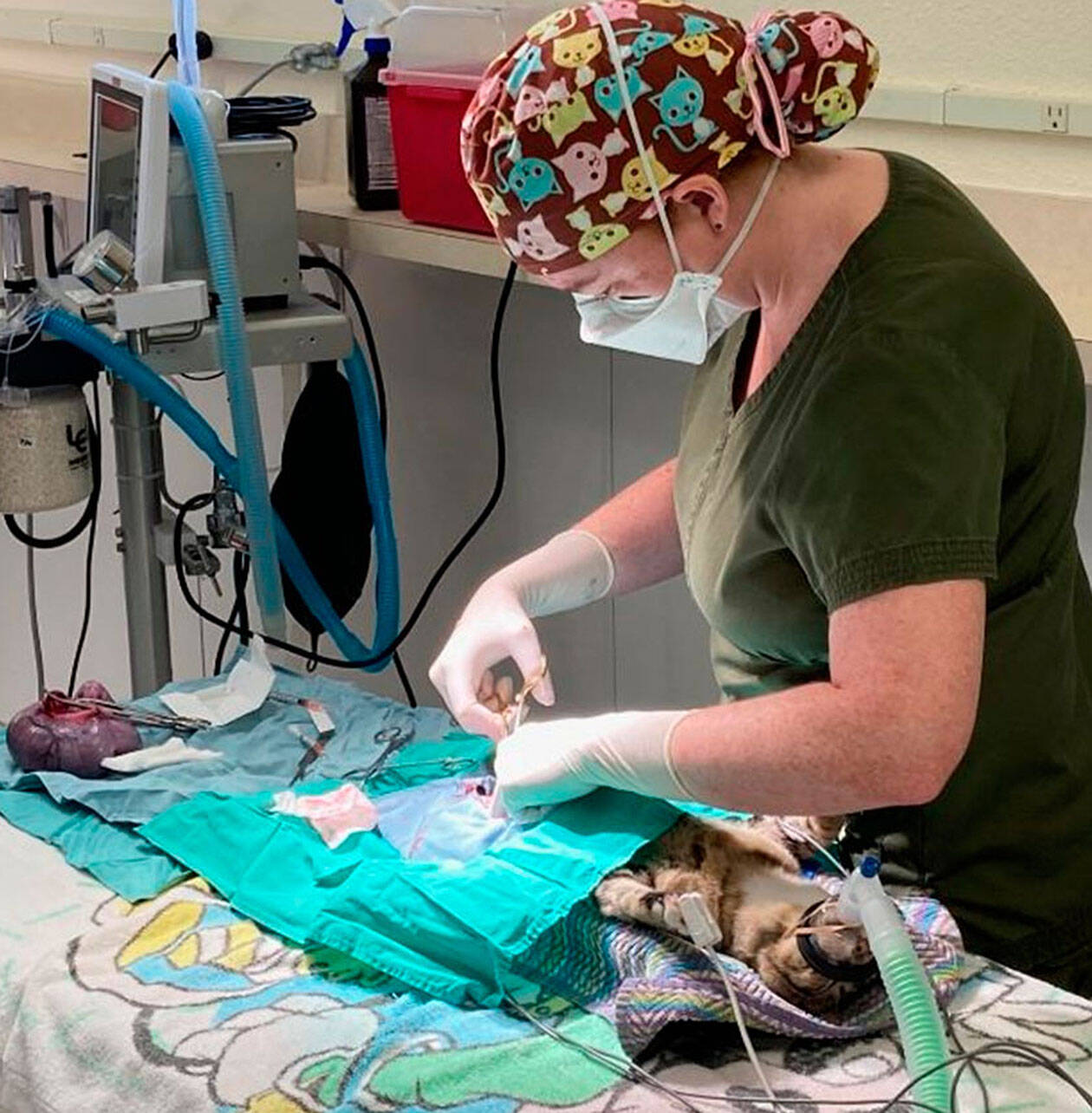Pets of homeless and low-income people now have a place to get emergency veterinary care with the opening of Kitsap Humane Society’s Lifesaving Center.
“One of the harsh realities now is there are a lot of people who are in need and aren’t able to get (their pets) access to desperately needed care,” said Dr. Jen Stonequist, co-interim executive director at KHS. “What we are doing for the people and animals that need us is really important. The ability of this community to support a clinic that helps people, when facing hard times, to keep their pets is really incredible.
“It’s going to be a game-changer,” Stonequist said.
The center – officially called the Russ and Linda Young Veterinary Lifesaving Center – primarily serves dogs and cats. The $10.1 million facility will treat an estimated 2,500 animals each year.
The center formally opened in March but during a pilot period, as the complex geared up to full operation, the staff provided critical surgeries to select animals. Dozens of furry patients were assisted during this preliminary stage. Here are a few examples:
Hulk, a 102-pound pitbull, had a hematoma on his right ear. Removing the swelling required expensive surgery the owners could not afford. After a successful surgery and a lot of drool, Hulk returned to health and was reunited with his family.
Mercury, a brown tabby cat, had been hit by a car in Bremerton and incurred extensive injuries to his hind legs and hips. The owners took him to emergency care but were unable to pay for needed services. The family took the animal to KHS to be euthanized. But veterinary team members examined the tabby and had another idea. After an operation, follow-up care and daily bandage changes, Mercury made a full recovery.
Judah, a 7-year-old cat with eye issues, was found as a stray in Bremerton. The feline was brought to the shelter suffering from bilateral entropion, a condition in which the animal’s eyelashes rub against the eye causing injury. The owner was unable to afford the procedure. But the lifesaving center performed surgery, and Judah was reunited with its owner.
The center provides services ranging from standard spay and neuter procedures to operations.
“We will be doing general practitioner emergency-type procedures. We will assist with things like foreign body surgery, like animals eating something they shouldn’t, with amputation surgeries, with exploratory surgeries if an animal has a mass removal, and wound repair. We will also be doing dental procedures, like cleanings and extractions,” Stonequist said.
The center features a community clinic that provides services similar to those available at a neighborhood vet. “We will be seeing things like eye and skin infections, upper respiratory and lameness, inappetence, and older pets that are ill,” she said, adding medical services will be provided on a sliding scale.
The building has two operating rooms, a dental suite, examination areas, and prep and recovery rooms.
Humane society personnel toured similar facilities around the nation to help design the 6,500-square-foot center. Bremerton’s Rice Fergus Miller was the architect. The late Dr. Jim Moore, a beloved Kingston veterinarian for over 30 years, influenced the project. “He was passionate about providing care for the community and pets in need,” Stonequist said.


